“If Republicans don’t understand the generational gap that we have right now, ‘28, ‘30, ‘32 and 2036 are going to be disastrous for the Republican party … the younger Republican priority is very different than the [priorities] of my generation and above.” NH Republican Governor Chris Sununu, March 15, 2023, LX News interview
For the first time since Boomers began to turn 18, Democrats are united across generational lines and Republicans are not. This presents both a challenge to the Republican Party to capture and extend the loyalties of the young voters who, at least nominally, are currently attached to the GOP and an opportunity for the Democratic Party to attract these disaffected young Republicans in the next election cycle or two, if not on a longer-term basis.
Based on the results of the 2022 midterm elections, the Democrats have been more successful in capitalizing on the opportunity of a disappearing generation gap, with Republicans still struggling to meet their challenge.
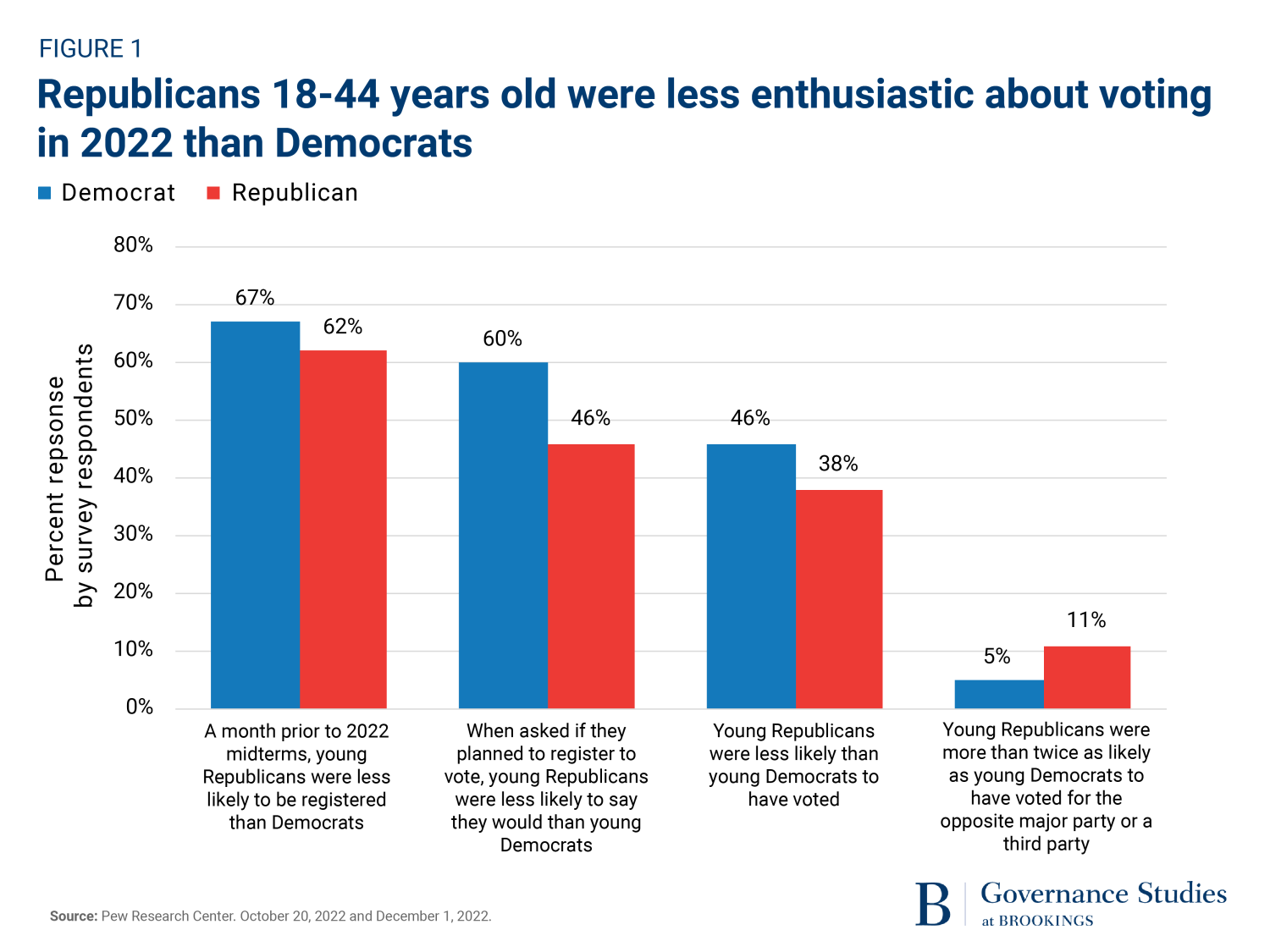
In 2022, 18–44-year-old Republican identifiers were much less interested in participating in the political process. They were less likely to have been registered to vote, less likely to have voted even when registered, and more than twice as likely to have voted for either the other major party or a third party than their Democratic counterparts.
A major reason for both the disappearance of a generation gap and relatively high levels of voter registration and turnout among younger Democrats in 2022 compared with Republicans is that Democratic campaigns broadly reflected the issue concerns of 18–44-year-olds, both overall and specifically among those who identify as Democrats. By contrast, Republican campaigns often seemed to double down on the concerns of the older members of the electorate, especially those of older Republicans. The result of such strategies has been to further drive a wedge between younger and older Republican voters, even as Democrats demonstrate a newfound ability to speak as one voice to all their voters.
A Pew October 2022 survey showed that younger (18-44 years old) and older (45+ years old) Democrats were in close accord on “social issues” such as America’s openness to newcomers, the perception of continuing challenges facing African Americans and women, as well as on economic issues like the necessity of business regulation and assistance to the needy and attitudes toward Donald Trump. By contrast, there were statistically significant differences between younger and older Republican identifiers, especially on the “social issues” and feelings about the former president; so much so that on some issues 18–44-year-old Republicans are more closely aligned with their Democratic compatriots than their Republican elders.[1]
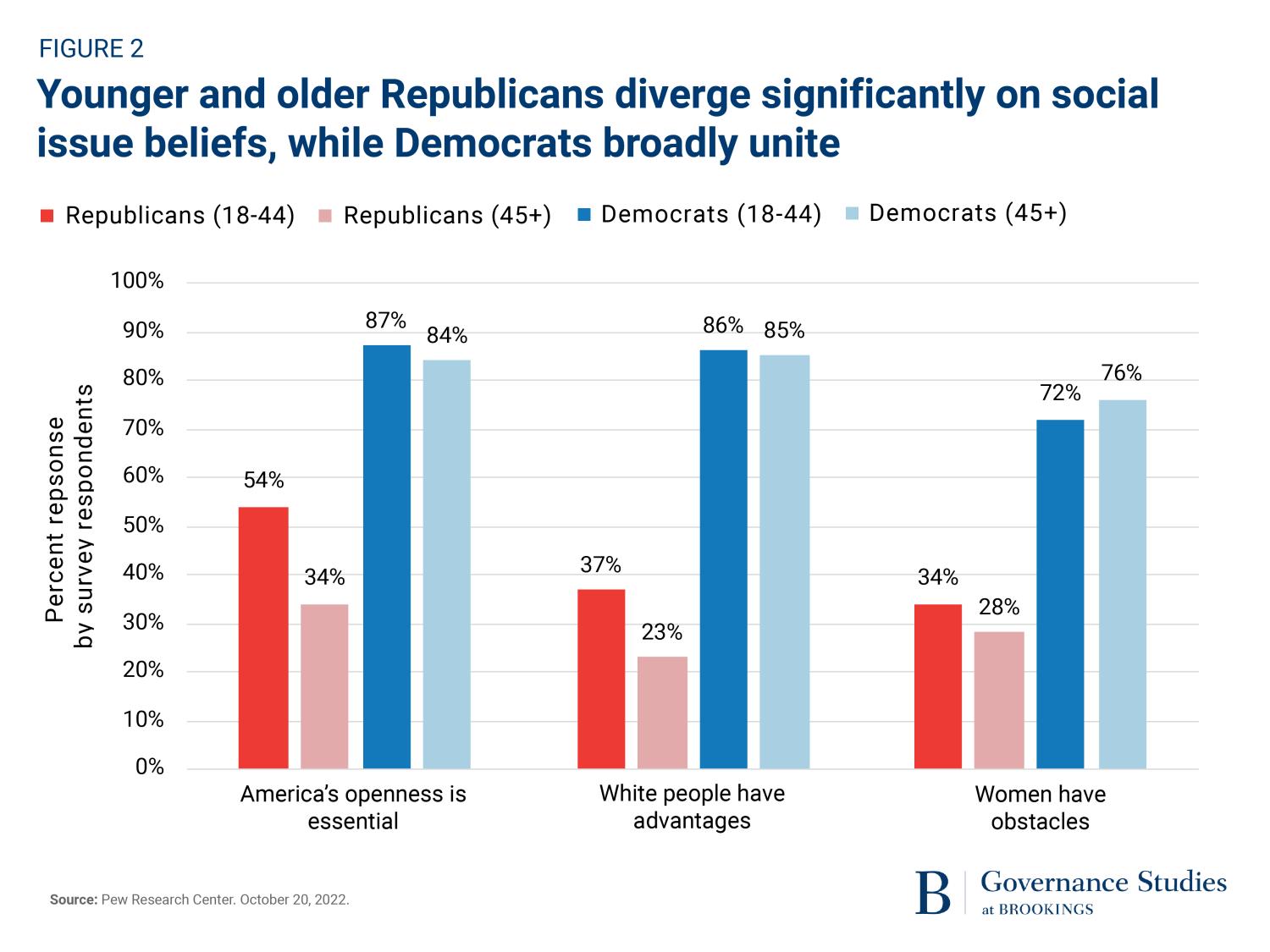
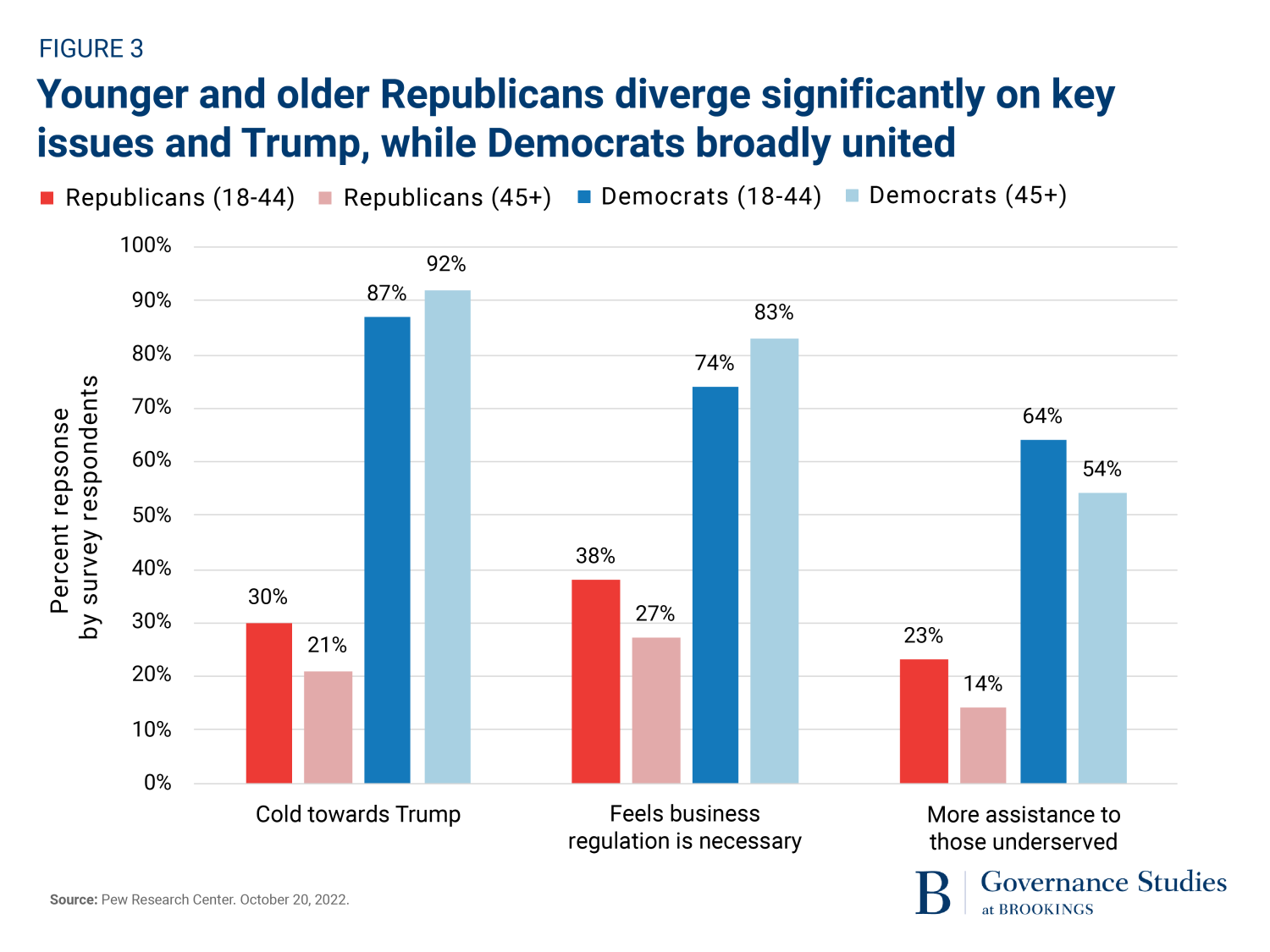
When voters were asked by Pew a month before the 2022 election to rank the importance of a variety of issues in the 2022 campaign, the answers for three of Republican’s favorite topics — immigration, violent crime and gun policy — revealed these generational differences most clearly. For example, 81% of older Republicans thought immigration was a very important issue, but surprisingly for an issue that has generated so much attention and excitement among Fox News viewers and GOP campaigners, less than half of Republicans under the age of 45 thought it was a very important issue. The percentage of younger Republicans who called the issue very important (49%) was closer to responses from Democrats under the age of 45 (35%) and older Democrats (38%) than it was to older Republicans. Those interparty differences between younger Republicans and similarly aged Democrats of 14 points and older Democrats of 11 points were significantly smaller than the 22-point intraparty difference the survey found among Republicans.
Similar results were recorded on another GOP hot button issue, violent crime. Republicans under the age of 45 were 21-percentage points less likely to think it was a very important issue than those older than 45 (58% to 79%). Surprisingly, on an issue that Republican campaigns pounded away on in 2022, young Republicans were only three percentage points more likely to cite it as a very important issue than older Democrats (58% to 55%). Although age did play a role in how Democrats perceived the importance of an issue pundits could not stop talking about, young Democrats were closer to their older party colleagues, 41% to 55% (a 14-percentage point gap), than the 21-percentage point distance between young Republicans (58%) and their older party compatriots (79%).
The importance of doing something about guns in America is the third issue in the unholy trinity of social issues that usually divide Americans along party lines. But here again, age triumphed over party loyalty. Half of Democrats under the age of 45 called gun policy a very important issue in October 2022. That percentage was five points HIGHER than the ranking Republicans in the same age group gave it, 45%. On this issue as well, younger Republicans found themselves out of step with older Republican voters, 58% of whom called gun policy a very important issue.
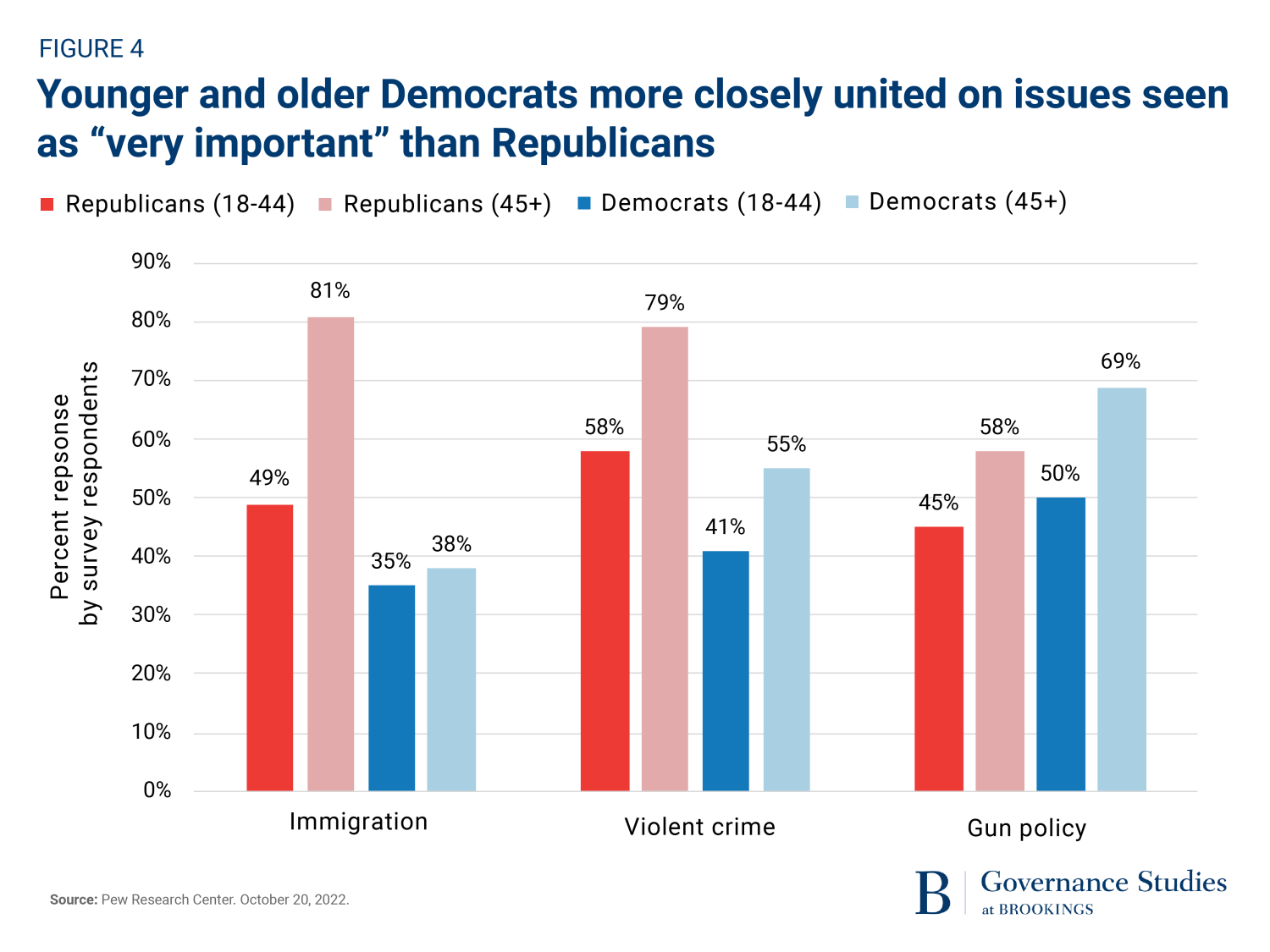
Some other issues that featured prominently in the 2022 midterms also showed young GOP voters out of step with their party elders, but unlike the three social issues shown in the chart above, their perceptions were not matched by Democrats in that age cohort. For instance, 84% of older Democrats cited the future of democracy as a very important issue in Pew’s October 2022 survey. So did 76% of older Republicans, who likely had different reasons for their concern, but less than half of younger Republicans (48%) rated it that way, creating a 26-percentage point Republican generation gap. The importance of the future of democracy as an issue also generated a sizeable (21-percentage points) Democratic generation gap, but younger Democrats concern about the subject was still much higher than Republicans of their age.
Overall, the greater ability of Democratic Party campaigns to mesh their themes with the issue concerns of younger voters gave the Democrats a significantly more diverse electoral coalition along generational and partisan lines than the Republicans. First, Democrats drew a significantly greater percentage of their 2022 electoral backing from voters under 45 than did Republicans (39% to 24%). Second, although a clear majority of the votes that Democrats received from 18–44-year-olds came from Democratic identifiers (64%), over a third were cast by Independents (31%) and even five percent by Republicans. Their strength among young Independents accounted for the Democrats’ narrow — and rare — lead (49% to 47%) among Independents overall in 2022.
Republicans remain out of step with voters under 45 whose loyalty to the GOP is being sorely tested by a leadership more focused on yesterday’s battles than tomorrow’s challenges. In contrast, the absence of a Democratic generation gap brought a new sense of unity and purpose to the party’s campaigns in 2022. If Democrats stay focused on their emerging consensus on which issues to emphasize across all age groups, they should do even better in 2024 and beyond.
Footnotes
- Figure 2 shows the percentages agreeing with the following statement: “America’s openness to people from all over the world is essential to who we are as a nation;” saying a “great deal” or a “fair amount” to the following statement: “In general, how much do white people benefit from advantages in society that Black people do not have;” and agreeing with the following statement: “There are still significant obstacles that make it harder for women to get ahead than men.” Figure 3 shows the percentages “very cold” or “cold” toward Donald Trump; agreeing with the following statement: “Government regulation of business is necessary to protect the public interest;” and agreeing that “the government should provide more assistance to people in need.” (Back to top)

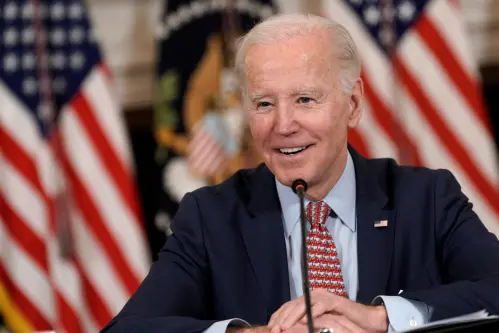
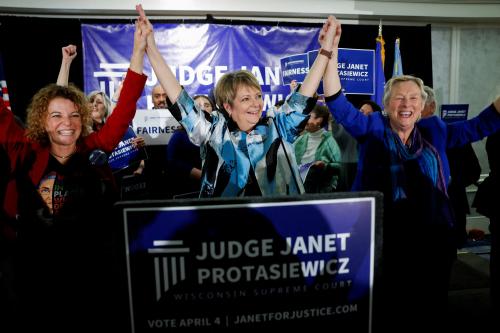





Commentary
How younger voters will impact elections: Generational change divides GOP, unites Democrats
April 24, 2023